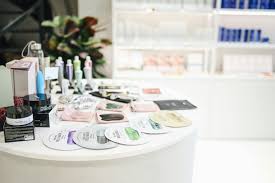Introduction:
The rise of full beauty brands marks a transformative shift in the beauty industry. No longer limited to narrow standards, these brands celebrate diversity, inclusivity, and empowerment. From skincare to cosmetics and haircare, full beauty brands cater to every skin tone, body type, and personal style, making beauty accessible to all.
By focusing on innovation and representation, full beauty brands have captured the hearts of modern consumers seeking authenticity and self-expression. With products designed to meet the unique needs of diverse audiences, they are reshaping the industry and setting new benchmarks for success. This article explores the trends, strategies, and growth opportunities that define full beauty brands today.
1. Understanding the Market for Full Beauty Brands:
Market Trends Driving Demand for Full Beauty Brands:
Consumer demand for inclusivity and representation has fueled the growth of full beauty brands. As beauty enthusiasts seek authenticity, these brands have stepped up with products that embrace individuality and cater to underserved markets.
Key Factors That Influence the Success of Full Beauty Brands:
Brand identity, ethical practices, and product innovation play critical roles in the success of full beauty brands. Companies that emphasize cruelty-free ingredients, sustainable packaging, and diverse marketing campaigns resonate more with modern buyers.
Why Now Is the Time to Invest in Full Beauty Brands:
The beauty industry is undergoing rapid transformation, and full beauty brands are at the forefront. With social movements promoting self-love and inclusivity, businesses focusing on diversity are gaining traction and market share.
2. Types of Products Offered by Full Beauty Brands:
Inclusive Skincare Solutions for All Skin Types:
Full beauty brands provide skincare products tailored for every complexion and skin concern, addressing dryness, acne, and sensitivity while promoting healthy, radiant skin.
Makeup Collections for Diverse Skin Tones:
Recognizing the need for inclusive makeup, full beauty brands offer foundations, concealers, and palettes that suit a wide range of skin tones, ensuring everyone feels represented.
Haircare Products for Every Texture and Style:
From curly and coily hair to straight and fine strands, full beauty brands design formulas that nurture and enhance natural textures, celebrating individuality.
3. Finding the Ideal Full Beauty Brands for Your Needs:
Evaluating Ingredient Quality and Ethical Standards:
Consumers prioritize clean beauty, making ingredient transparency and cruelty-free certifications essential for choosing full beauty brands that align with personal values.
Accessibility and Product Availability:
Convenience is key, and full beauty brands that leverage e-commerce platforms and partnerships with major retailers make their products accessible globally.
Customer Reviews and Brand Reputation:
Customer feedback and online reviews provide insights into product performance, helping buyers make informed decisions when exploring full beauty brands.
4. Financial Considerations When Investing in Full Beauty Brands:
Pricing Strategies That Appeal to a Wider Audience:
Affordability without compromising quality helps full beauty brands attract budget-conscious consumers while maintaining a luxury feel.
Scaling Opportunities and Revenue Streams:
Expanding product lines and tapping into global markets create growth opportunities for full beauty brands, driving long-term profitability.
Collaborations and Partnerships to Boost Visibility:
Partnering with influencers, celebrities, and social media platforms enhances brand recognition and fosters customer loyalty.
5. Legal and Compliance Requirements for Full Beauty Brands:
Ensuring Product Safety and Regulatory Compliance:
Meeting FDA regulations and obtaining certifications ensure full beauty brands maintain trust and credibility among consumers.
Labeling Requirements and Transparency Practices:
Clear labeling with ingredient details and usage instructions reinforces consumer confidence in full beauty brands.
Intellectual Property Protection for Formulations:
Patents and trademarks protect unique formulas and branding strategies, giving full beauty brands a competitive edge.
6. Marketing Strategies for Full Beauty Brands:
Leveraging Social Media for Engagement and Awareness:
Platforms like Instagram, TikTok, and YouTube allow full beauty brands to showcase products, share tutorials, and connect with audiences directly.
Influencer Partnerships and User-Generated Content:
Collaborating with influencers amplifies visibility, while customer-generated reviews and tutorials build credibility for full beauty brands.
Inclusive Advertising Campaigns That Resonate with Audiences:
Highlighting diversity and real-life beauty stories helps full beauty brands form authentic connections and foster loyalty.
7. Case Studies: Success Stories of Full Beauty Brands
Breaking Barriers with Inclusive Product Launches:
Full beauty brands have disrupted traditional markets by offering inclusive shade ranges and formulas, earning widespread acclaim.
Sustainability Initiatives That Drive Brand Loyalty:
Sustainable sourcing, eco-friendly packaging, and recycling programs demonstrate the commitment of full beauty brands to environmental responsibility.
Global Expansion Strategies That Boost Market Presence:
Leveraging e-commerce and international partnerships, full beauty brands have successfully expanded to reach diverse audiences worldwide.
Conclusion:
Full beauty brands represent more than just products—they embody a cultural movement toward inclusivity, representation, and self-expression. By prioritizing diversity and catering to underserved markets, these brands have set new standards in the beauty industry, empowering individuals to embrace their unique beauty.
FAQs:
1:What are full beauty brands?
Full beauty brands are companies that prioritize inclusivity and diversity by offering beauty products for all skin tones, hair types, and body shapes.
2:Why are full beauty brands popular?
They resonate with modern consumers who value authenticity, inclusivity, and ethical practices in the beauty industry.
3:Are full beauty brands cruelty-free?
Many full beauty brands focus on cruelty-free and vegan products to meet ethical standards.
4:What products do full beauty brands offer?
They offer skincare, makeup, and haircare products designed for a wide range of skin tones and textures.
5:How do I find the right full beauty brands?
Look for brands with transparent ingredient lists, positive reviews, and ethical certifications.
6:Are full beauty brands affordable?
Many balance affordability with high-quality ingredients, making them accessible to a broad audience.
7:Where can I buy full beauty brands?
They are available in stores, online marketplaces, and specialty retailers globally.
8:Are these products safe for sensitive skin?
Most full beauty brands offer hypoallergenic and dermatologist-tested products for sensitive skin.
9:Do full beauty brands use sustainable practices?
Many emphasize eco-friendly packaging, recyclable materials, and sustainable sourcing.
10:Why should I invest in full beauty brands?
Their focus on inclusivity, sustainability, and innovation positions them for long-term success in the beauty industry.

